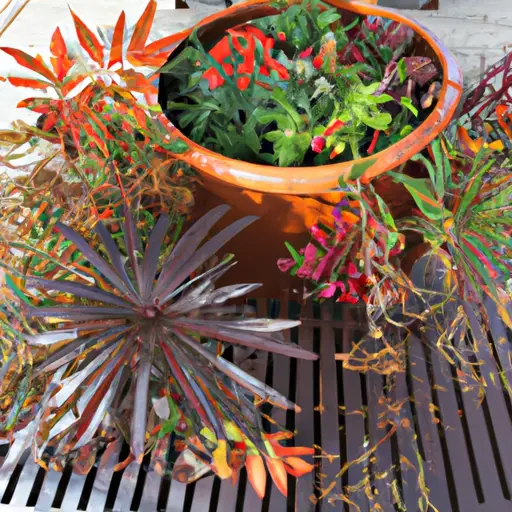The Art of Balancing Colors and Textures in Container Gardens
Container gardens are a fantastic way to bring life and vibrancy to any space, whether it’s a small balcony, a patio, or even a windowsill. They offer endless possibilities for creativity and allow individuals to experience the joy of gardening without the need for a large outdoor area. One of the key elements that make container gardens truly captivating is the artful combination of colors and textures. In this article, we will explore the techniques you can use to achieve a well-balanced and visually stunning container garden.
Colors play a vital role in setting the mood and creating visual interest in any form of art, including container gardens. When selecting colors for your container garden, consider the overall theme or ambiance you wish to create. Do you want it to be bold and vibrant or soft and soothing? Look around your space and take note of any existing colors that can be incorporated or contrasted with your plant selection.
One approach is to choose colors from opposite sides of the color wheel. This creates an attractive contrast that instantly catches the eye. For example, pairing purple flowers with yellow ones will create a dynamic visual impact. Another option is to select plants with analogous colors which are next to each other on the color wheel. This results in a harmonious blend that evokes tranquility and cohesion.
However, keep in mind that color isn’t limited only to flowers; foliage can also contribute greatly to your container garden’s color palette. Plants like coleus or caladiums offer striking patterns and vibrant hues through their leaves alone, allowing you to add depth and interest even without any blooms.
Textures are equally important when it comes to creating visually pleasing container gardens. The interplay between smooth, glossy leaves and rough, textured foliage adds dimensionality while stimulating both visual interest and touch sensation. Mixing textures within your container garden brings an additional layer of intrigue as light reflects differently off various leaf surfaces.
To create texture, mix in plants with different leaf shapes, sizes, and textures. For example, combine the velvety leaves of lamb’s ear with the feathery foliage of ornamental grasses. The contrast between the two will add an intriguing visual element that captures attention. Incorporating plants with varying heights also contributes to an appealing texture balance in your container garden. Consider adding tall, spiky plants such as cordylines or dracaenas alongside low-growing creepers like ivy or creeping thyme.
While it is important to strike a balance between colors and textures in your container garden, don’t forget to consider scale and proportion as well. Large leaves or flowers can overwhelm smaller ones if not carefully planned. Similarly, too many contrasting colors or textures can result in a chaotic and overwhelming display. Remember that simplicity can be just as striking as complexity.
Another aspect to keep in mind when designing your container garden is the overall maintenance required for each plant chosen. Some plants may require frequent pruning or are more prone to disease and pests than others. Understanding the growth habits and care needs of each plant will help you create a well-maintained and thriving container garden.
Lastly, don’t limit yourself to traditional containers; think outside the box when selecting vessels for your plants. From repurposed vintage buckets to elegant ceramic pots, there are endless possibilities that can elevate the aesthetic appeal of your container garden while complementing its colors and textures.
In conclusion, creating a visually stunning container garden relies on skillfully balancing colors and textures. By considering color wheel principles, incorporating diverse foliage varieties, selecting plants with complementary textures, and paying attention to scale and proportion, you can design an exquisite display that brings joy and beauty to any space. So go ahead and unleash your creativity — let nature’s vibrant palette inspire you to create a masterpiece in your very own container garden!













